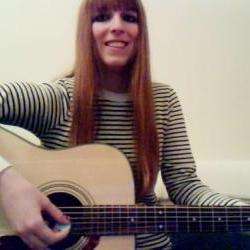“I want to be able to hear the process happening throughout the sounding music”, Steve Reich wrote in his 1968 essay Music as a Gradual Process. His music of the 1960s, from tape pieces such as It’s Gonna Rain to instrumental works like Piano Phase, employed phasing and looping techniques. These compositions are some of the first examples of both process music and downtown musical minimalism.
Since then, his style has become much less minimalist. But on Monday night at the Guggenheim Museum, you could hear a process unfolding in one of his more recent works, Nagoya Marimbas. During one of the two discussions of the evening, Mr Reich explained that in 1994, he was asked to write a piece for marimbas for a new concert hall in Nagoya, Japan. With only two weeks to compose the work, he returned to the familiar territory of his repeating, modulating patterns of the 1960s. With “longer patterns” and “more frequent shifts”, the process is more intricate than his earlier works – yet just as mesmerizing. Todd Meehan and Doug Perkins, the two brilliant percussionists of the Meehan/Perkins Duo, let the phrases tumble from their mallets, making the expertly aligned rhythms sound effortless. The notes spilled over each other into a charming, if short-lived, counterpoint.
This was the introduction to one in a series of performances labeled “Works & Process”, a program founded in 1984 by Mary Sharp Cronson. Over the course of the evening, we witnessed three performance groups playing three works written by Steve Reich in the last 20 years. And we were also treated to two discussions between Mr Reich and Limor Tomer, general manager of the Met Museum’s Concert & Lecture series. The glimpse into the process of composing the next piece, WTC 9/11, made the live performance more eye-opening and slightly less harrowing.
This was still one of the most moving concert experiences of my life. Each movement consists not only of live music but of pre-recorded music and human speech, in the vein of Different Trains (1988). During the first movement, “9/11/01”, these are archived voices from the FDNY and NORAD air traffic controllers. The shrieking strings of the JACK Quartet (Ari Streisfeld, Christopher Otto, John Pickford Richards, and Kevin McFarland) merged with the haunting voice recordings – “They’re goin’ the wrong / They’re goin’ the wrong way” – and with the beep of a landline left off the hook (which, it turns out, is an F). The musicians, along with Mr Reich at the sound board, were focused and solemn.
For the second movement, “2010”, Mr. Reich used clips of recordings he made through a series of interviews with neighborhood residents, including David Lang, and the first ambulance driver to arrive at the scene. The words – “I was sitting in class –”, “I was taking my kids to school –”, “People – / People / jumping from the building – / jumping from the building” – in combination with the music created a stark, historical sound poem. Nine years after the fact, the panic was summarized – “it was chaos” – and given raw harmony. Psalms and prayers were recited and sung during the final movement, which depicts the chaos of “afterwards”: transporting bodies and using DNA tests to identify them. These final recordings came from a cellist/singer, cantor, and neighborhood resident, as well as two of the volunteers who sat with bodies and parts of bodies for seven months after September 11th as part of the Jewish tradition, called Shmira, of guarding bodies from death till burial. The words of the “cellist with a good voice” melted over the sounds of the quartet and the return of the beeping phone. The sudden cut-off left the listeners in silent awe. Despite the brevity of the work, it carries a truly powerful cultural and artistic weight.
During the second discussion, Mr Reich explained that he was inspired to write his latest work after hearing Radiohead guitarist Jonny Greenwood play in Krakow. He zeroed in on two Radiohead songs (Everything in its Right Place and Jigsaw Falling into Place), borrowed and transposed bits of melody and harmony from them, and crafted Radio Rewrite, a captivating mixture of Reich’s well-known style with that of the British rock band. The first three movements (of five in all) were performed at Monday night’s concert by Alarm Will Sound, the audacious New York-based new music group. The piece is scored for flute, clarinet, two vibraphones, two pianos, string quartet, and electric bass. Artistic director and conductor Alan Pierson led the passionate instrumentalists through the blend of colors and shapes, finally arriving at an abrupt ending. Not having heard the final two movements, it was impossible not to go home a bit unsatisfied. However, the evening overall provided a dynamic portrait of Steve Reich’s most recent music.


